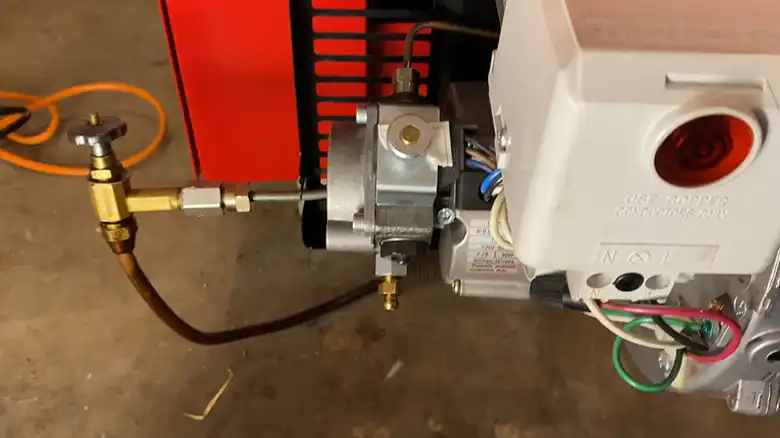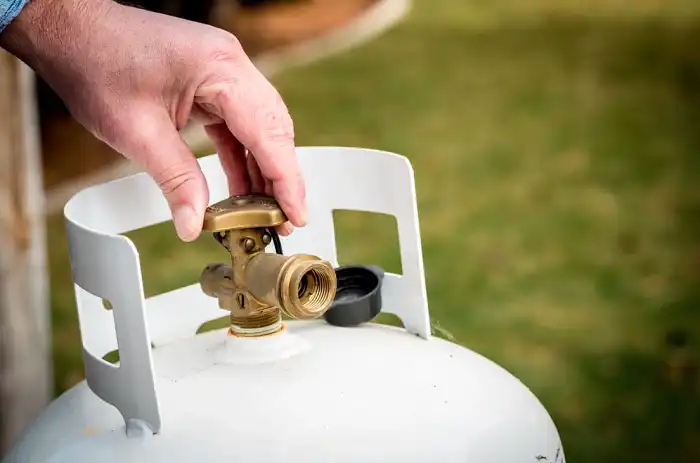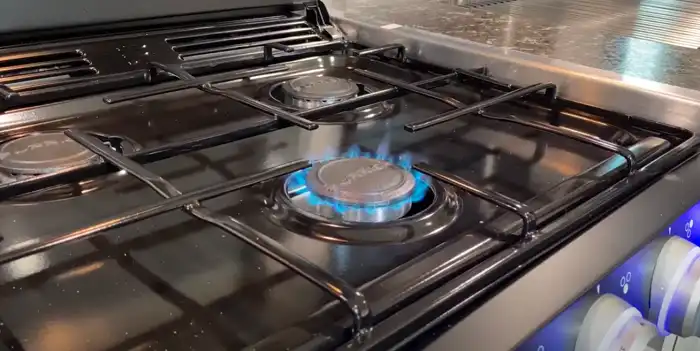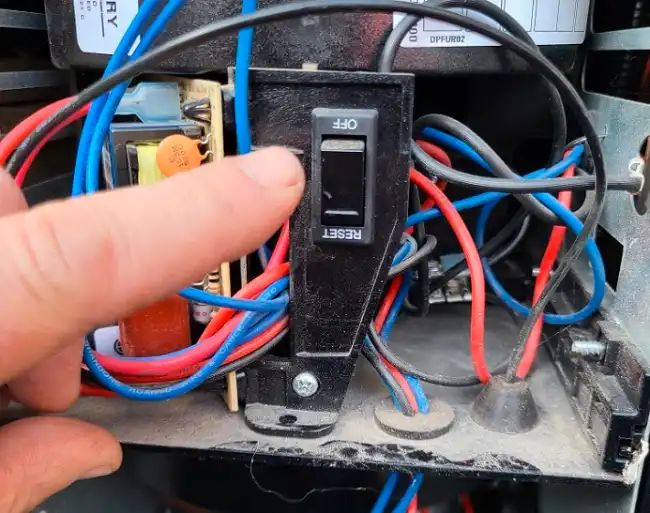Waking up to a chilly home or RV and a non-functioning furnace is a situation no one wants to face, especially during the winter months. One of the common culprits behind this scenario is running out of propane. According to the U.S. Energy Information Administration, nearly 5 million households rely on propane as their primary heating fuel. While running out of propane is an inconvenience, it’s important to handle the situation safely and properly to avoid any potential hazards.
Therefore, in this article, we’ll explain how to restart a furnace after it shuts off due to a propane outage and how to ensure that it doesn’t happen in the future. Let’s begin.

Understanding Propane Heating Systems
Propane heating systems typically consist of a storage tank (LP, RV, etc.), a gas line, and a furnace. The type of propane tank you have will determine the refill procedure. For instance, larger residential tanks may require a professional service, while smaller RV tanks can often be refilled at dedicated refill stations.
Regardless of the tank type, it’s crucial to understand the safety considerations associated with propane heating systems. Propane is a highly flammable gas, and any leaks or improper handling can lead to fires or explosions. Additionally, incomplete combustion of propane can result in carbon monoxide buildup, which is a silent killer.
Step 1: Refilling the Propane Tank Safely

Visually inspect your propane tank or check the gauge to confirm it’s empty.For larger residential tanks, it’s best to hire a professional propane service to refill the tank safely.
However, for smaller tanks like RV tanks, you can often refill them yourself at dedicated propane refill stations. Just be sure to follow proper safety precautions.
Step 2: Preparing the Furnace for Restart
Before attempting to restart the furnace, you’ll need to locate the power switch and circuit breaker. Consult your furnace’s user manual if you’re unsure about their locations. Turn off the furnace power at both the switch and the circuit breaker, and wait a few minutes for the system to reset completely.
If your furnace has a digital display, take note of any error codes present before resetting. These codes can provide valuable insights into potential issues and assist in troubleshooting later on.
Step 3: Bleeding Air from the Gas Lines

After running out of propane, air can sometimes enter the gas lines, which can disrupt the ignition process. If you suspect air in the lines, you can try bleeding it out by lighting a stovetop burner first.
Locate a gas stovetop burner or other gas appliance separate from the furnace. Open a window or door for ventilation. Turn on the stovetop burner and let it run for 2-3 minutes to purge air from the lines. Once the burner burns steadily without flickering, turn it off.
However, it’s important to exercise caution and follow the manufacturer’s instructions for your specific model. Never attempt to use the furnace’s spark ignition to bleed air from the lines, as this can be extremely dangerous.
Step 4: Properly Restarting the Furnace

Once you’ve completed the necessary preparations, it’s time to restart the furnace. Turn the power back on at the circuit breaker and the furnace switch. Wait for the system to cycle and listen for any clicking sounds indicating ignition attempts.
If the furnace fails to ignite, check the exhaust flue to ensure it’s not blocked or clogged, as this can prevent proper venting and cause ignition issues.
Troubleshooting Ignition Issues
If your furnace still doesn’t ignite after following the restart procedure, there could be several potential reasons, such as a safety lockout, pilot light issues, or dirty burners. Consult your user manual or seek assistance from a qualified HVAC technician for further troubleshooting.
Many RV and household furnaces have a reset button that can be pressed after a short wait time. Refer to your user manual for the location of this button and follow the instructions carefully.
Safety Precautions When Working with Propane Furnaces
Throughout the process of restarting your furnace after a propane run-out, it’s crucial to prioritize safety. Never attempt to tamper with gas lines or internal furnace components unless you’re a qualified professional. Doing so can lead to gas leaks, fires, or carbon monoxide poisoning.
If you experience any symptoms of carbon monoxide poisoning, such as headaches, dizziness, nausea, or flu-like symptoms, immediately evacuate the premises and seek fresh air. Call emergency services if necessary.
After a propane run-out, especially if it occurred multiple times in a short period, it’s highly recommended to have a qualified HVAC technician inspect your furnace for any potential issues or damage.
Avoiding Future Propane Outages
To avoid the hassle of running out of propane and having to restart your furnace, consider setting up automatic propane deliveries or installing a tank monitoring system. These services can help ensure your tank is refilled before it runs empty.
Additionally, make a habit of regularly checking your propane gauge and scheduling timely refills. During the colder months, it’s also a good idea to schedule preventative maintenance check-ups for your furnace by a qualified technician.
Conclusion
Running out of propane can be an inconvenient and potentially dangerous situation, but by following the proper steps and prioritizing safety, you can restart your furnace and restore warmth to your home. Remember, if you encounter any issues or feel uncomfortable with the process, don’t hesitate to seek assistance from a licensed HVAC professional.
Frequently Asked Questions (FAQs)
Can I restart the furnace immediately after refilling the propane tank?
No, it’s recommended to wait a few minutes after refilling the tank before attempting to restart the furnace. This allows the system to reset and any residual air in the lines to dissipate.
How often should I schedule propane tank refills?
The frequency of refills depends on your usage and tank size, but it’s generally advisable to schedule refills when your tank reaches around 20-25% capacity to avoid running out.
Is it safe to bleed air from the lines by lighting the furnace’s burners?
No, it’s not safe to use the furnace’s burners to bleed air from the lines. This can be extremely dangerous and should be avoided. Instead, use a stovetop burner to purge the air before attempting to ignite the furnace.
How can I tell if my furnace has a reset button?
Consult your furnace’s user manual to determine if it has a reset button and locate its position. The manual should provide instructions on when and how to use the reset button safely.


